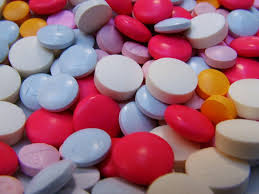Symptom Finder - Treatment of Diabetes Mellitus Type II
1. Seek control of blood sugar first with diet modification and regular exercise.
2. Many of these patients are obese so, a low calorie ADA diet is indicated where the main ingredients are fruits and vegetables.
3. When diet is insufficient to bring the HbA1C to 7.0 or less, add metformin (Glucophage) 500–1,000 mg bid.
4. If metformin alone is unable to bring the HbA1C to 7.0% or below, add glipizide (Glucotrol) 2.5–5 mg a day, gradually increasing to 40 mg a day.
5. Alternatively glyburide (Micronase) 1.25–10 mg daily may be given instead of glipizide.
6. Other hypoglycemic agents may be tried
7. In patients who are resistant to oral hypoglycemic agents be sure to look for UTI and other systemic infections before starting on insulin.
8. Consult an endocrinologist before starting insulin.
9. A combination of low dose insulin therapy such as insulin glargine (Lantus) 0.2–0.4 units/kg/day and metformin (Glucophage) 500– 1,000 mg bid may suffice at first. Insulin dosage can be gradually increased to bring the HbA1C to 7.0% or below.
10. Annual checks for retinopathy, nephropathy, and neuropathy as outlined under Type 1 Diabetes Mellitus should be made.
11. Brittle diabetics may benefit from low dose corticosteroids or estrogen replacement therapy (in menopausal women) or testosterone replacement therapy (in men with possible male climacteric).
12. Look for common complications of diabetes such as hypertension, coronary artery disease, cholelithiasis, hyperlipemia, glaucoma, and PVD.
2. Many of these patients are obese so, a low calorie ADA diet is indicated where the main ingredients are fruits and vegetables.
3. When diet is insufficient to bring the HbA1C to 7.0 or less, add metformin (Glucophage) 500–1,000 mg bid.
4. If metformin alone is unable to bring the HbA1C to 7.0% or below, add glipizide (Glucotrol) 2.5–5 mg a day, gradually increasing to 40 mg a day.
5. Alternatively glyburide (Micronase) 1.25–10 mg daily may be given instead of glipizide.
6. Other hypoglycemic agents may be tried
7. In patients who are resistant to oral hypoglycemic agents be sure to look for UTI and other systemic infections before starting on insulin.
8. Consult an endocrinologist before starting insulin.
9. A combination of low dose insulin therapy such as insulin glargine (Lantus) 0.2–0.4 units/kg/day and metformin (Glucophage) 500– 1,000 mg bid may suffice at first. Insulin dosage can be gradually increased to bring the HbA1C to 7.0% or below.
10. Annual checks for retinopathy, nephropathy, and neuropathy as outlined under Type 1 Diabetes Mellitus should be made.
11. Brittle diabetics may benefit from low dose corticosteroids or estrogen replacement therapy (in menopausal women) or testosterone replacement therapy (in men with possible male climacteric).
12. Look for common complications of diabetes such as hypertension, coronary artery disease, cholelithiasis, hyperlipemia, glaucoma, and PVD.

